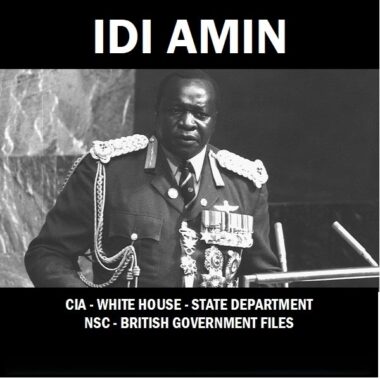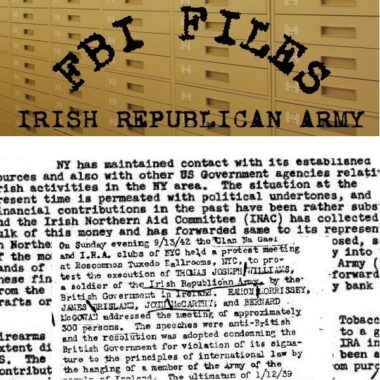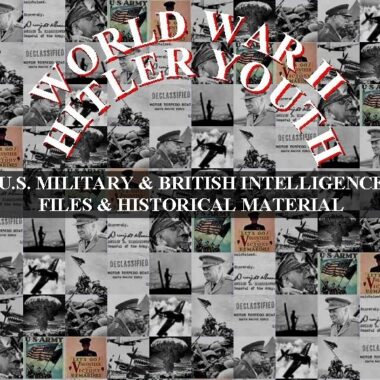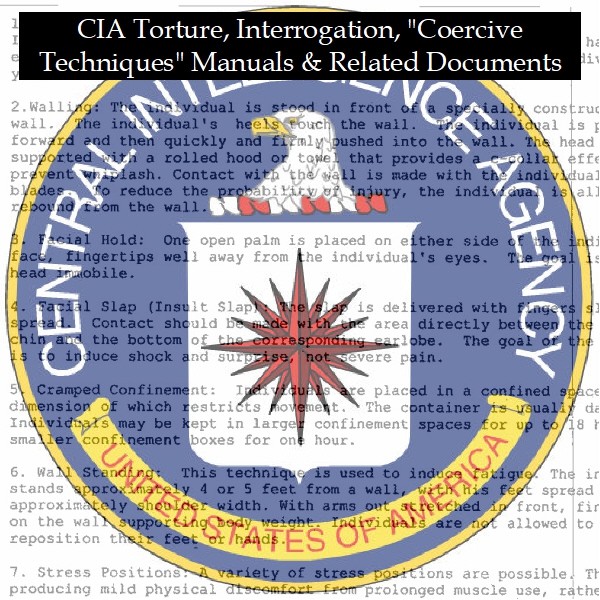Description
CIA Interrogation Manuals and Techniques: A Timeline
Timeline of Main Events:
- July 1963: The CIA publishes the KUBARK Counterintelligence Interrogation manual, containing a section on coercive interrogation techniques involving “Threats and Fear,” “Pain,” and “Debility.”
- September 1967: The U.S. Army publishes Field Manual 30-104, Handbook on Aggressor Insurgent War, which later influences CIA interrogation manuals.
- April 1968: The Green Berets create Lesson Plan 643, Armed Psyop, which also influences CIA manuals.
- 1983: The CIA publishes the Human Resource Exploitation Training Manual. It recommends using psychological duress, including the threat of violence and deprivation, to break resistance during interrogations, while advising against physical torture as counterproductive. A prologue is later added stating the prohibition of force, mental torture, threats, insults, or inhumane treatment.
- 1983: The CIA writes Psychological Operations in Guerrilla Warfare (Operaciones Sicológicas en Guerra de Guerrillas) for the Nicaraguan Contras, focusing on building political support through deceit, intimidation, and violence, and discussing assassinations.
- October 15, 1984: The Associated Press reveals the existence of the CIA’s “Psychological Operations in Guerrilla Warfare” manual for the Nicaraguan Contras.
- March 1992: A Defense Department internal investigation reports to Secretary of Defense Richard Cheney on “objectionable” material in seven counterintelligence and interrogation manuals used in Latin America. The material, originating from the Army’s “Project X” in the 1960s, covered beatings, false imprisonment, executions, and truth serums. Cheney agrees to recall and destroy the manuals.
- September 11, 2001: Terrorist attacks occur in the United States, leading to the “War on Terror” and a shift in interrogation policies.
- Post September 11, 2001: The CIA begins to develop and implement “enhanced interrogation techniques” for suspected terrorists.
- August 1, 2002: Jay S. Bybee, head of the Office of Legal Counsel (OLC) at the Department of Justice, issues two memos:
- “Standards of Conduct for Interrogation under 18 U.S.C. sections 2340-2340A” to Alberto Gonzales, providing a legal opinion on the UN Convention Against Torture and U.S. law regarding the interrogation of al-Qaeda operatives.
- “Interrogation of al Qaeda Operative” to John A. Rizzo of the CIA, analyzing the legality of proposed “enhanced interrogation techniques” to be used on Abu Zubaydah, concluding they would not constitute torture under U.S. law.
- August 2002: A CIA memo, “Description of Physical Pressures,” details various harsh interrogation techniques, including attention grasp, walling, facial hold, facial slap, cramped confinement, wall standing, stress positions, sleep deprivation, waterboarding, use of diapers, insects, and mock burial.
- October 29, 2002: Gul Rahman, a suspected extremist, is captured in Afghanistan.
- November 20, 2002: Gul Rahman dies in CIA custody in Kabul, Afghanistan, after being subjected to harsh conditions, including sleep deprivation, auditory overload, total darkness, isolation, a cold shower, rough treatment, and ultimately freezing to death while naked and chained to a wall.
- January 28, 2003: The CIA produces a Death Investigation report on Gul Rahman.
- March 14, 2003: John Yoo, acting head of the OLC, writes a memo to the Department of Defense concluding that “federal laws against torture, assault and maiming would not apply to the overseas interrogation of terror suspects.”
- 2003: Donald Rumsfeld issues a memo on “Counter-Resistance Techniques in the War on Terrorism,” approving specific techniques for interrogations at Guantanamo Bay.
- May 7, 2004: The CIA Inspector General publishes a Special Review: Counterterrorism Detention and Interrogation Activities (September 2001 – October 2003), covering the genesis of the program, legal analysis, videotapes, effectiveness, and the death of Gul Rahman.
- April 27, 2005: The CIA Inspector General issues another report of investigation into the Death of a Detainee In [REDACTED], further detailing the circumstances surrounding Gul Rahman’s death.
- 2008: The U.S. Department of Justice Office of the Inspector General releases A Review of the FBI’s Involvement in and Observations of Detainee Interrogations in Guantanamo Bay, Afghanistan, and Iraq.
- 2008: Leaders of the Senate Intelligence and Armed Services committees conclude that John Yoo’s March 14, 2003 memo was used by the DOD to justify harsh interrogation practices at Guantanamo Bay and Abu Ghraib.
- August 24, 2009: A redacted version of the CIA Inspector General’s Special Review: Counterterrorism Detention and Interrogation Activities (September 2001 – October 2003) is released to the public following a FOIA request by the ACLU.
- 2012: The Senate Select Committee on Intelligence (SSCI) completes its Committee Study of the Central Intelligence Agency’s Detention and Interrogation Program.
- 2013: The CIA issues CIA Comments on the Senate Select Committee on Intelligence Report on the Rendition, Detention, and Interrogation Program, a 136-page response to the SSCI report’s conclusions.
- December 9, 2014: The Senate Select Committee on Intelligence (SSCI) releases a 525-page document containing the key findings and executive summary of its report on the CIA’s detention and interrogation program, concluding that the techniques were harsher and more widespread than reported and involved deception of superiors and Congress.
- December 2017: Some material related to CIA manuals and guidance on coercive interrogation techniques, dating back to 1963, is declassified. An unredacted version of the Psychological Operations in Guerrilla Warfare manual is released in response to a FOIA request. A less redacted version of the CIA Inspector General’s Special Review (2004) is also made available.
Cast of Characters:
- Abu Zubaydah: A suspected al-Qaeda operative captured after 9/11. He was the subject of early “enhanced interrogation techniques” and the focus of a legal opinion by Jay S. Bybee regarding their legality.
- Alberto Gonzales: Counsel to President George W. Bush. He received a memo from Jay S. Bybee regarding the legal standards for interrogation under anti-torture statutes.
- Jay S. Bybee: Assistant Attorney General and head of the Office of Legal Counsel (OLC) at the Department of Justice during the early years of the “War on Terror.” He signed the August 2002 “torture memos” providing legal justification for the CIA’s enhanced interrogation techniques. Later became a federal judge.
- Richard Cheney: Secretary of Defense in 1992. He received a report on “objectionable” material in U.S. military interrogation manuals used in Latin America and agreed they should be recalled and destroyed.
- John Yoo: Deputy Assistant Attorney General in the OLC. He drafted the legal memoranda on enhanced interrogation techniques that Jay S. Bybee signed. After Bybee’s confirmation as a judge, Yoo became acting head of the OLC and authored a memo stating that federal laws against torture would not apply to overseas interrogations of terror suspects.
- Gul Rahman: An Afghan man suspected of extremist ties, captured in 2002 and detained at a CIA black site in Kabul. He died in custody in November 2002 after being subjected to harsh interrogation techniques and severe conditions.
- Donald Rumsfeld: Secretary of Defense during the George W. Bush administration. He approved a list of “counter-resistance techniques” for use in interrogations of unlawful combatants at Guantanamo Bay.
- William J. Haynes: General Counsel of the Department of Defense. He requested the legal opinion from the OLC (John Yoo) regarding the applicability of anti-torture laws to overseas interrogations.
- John A. Rizzo: Acting General Counsel of the CIA. He reportedly requested a legal opinion from the OLC (Jay S. Bybee) on the legality of using specific enhanced interrogation techniques on Abu Zubaydah.
CIA Torture, Interrogation, “Coercive Techniques” Manuals & Related Documents
2,708 pages of publications and documents related to CIA manuals, guidance and guidance received by the CIA covering “Coercive Interrogation Techniques,” dating from 1963 to 2013. Some material in this collection was not declassified until December 2017.
Materials include:
KUBARK Counterintelligence Interrogation (July 1963)
In this collection are two copies of this manual. One released in 1997 and one released in 2014 with fewer redactions. Contains a detailed section on “The Coercive Counterintelligence Interrogation of Resistants,” with assessments on the use of “Threats and Fear,” “Pain,” and “Debility.”
Human Resource Exploitation Training Manual 1983
This manual makes recommendations on prisoner interrogation including the use of threat of violence and deprivation and noted that no threat should be made unless the questioner “has approval to carry out the threat.” The interrogator “is able to manipulate the subject’s environment,” the manual states, “to create unpleasant or intolerable situations, to disrupt patterns of time, space, and sensory perception.”
The manual sought to teach foreign agents in ways to extract information from people without physical tortures, advising against physical torture as counterproductive. Instead, it discussed using intense fear, deep exhaustion, solitary confinement, unbearable anxiety, and other forms of psychological duress against a subject as ways of ”destroying his capacity to resist” his interrogator.
Under the subheading, “Threats and Fears,” the CIA authors note that “the threat of coercion usually weakens or destroys resistance more effectively than coercion itself. The threat to inflict pain, for example, can trigger fears more damaging than the immediate sensation of pain.”
When Congressional investigations began to look at activities of the CIA in Latin America, the Agency added a new prologue to the manual stating, “The use of force, mental torture, threats, insults or exposure to inhumane treatment of any kind as an aid to interrogation is prohibited by law, both international and domestic; it is neither authorized nor condoned”
Psychological Operations in Guerrilla Warfare (Operaciones Sicológicas en Guerra de Guerrillas) (1983) (UNREDACTED)
Since the existence of this manual became public there have been several releases of this manuals by the CIA. This release from late 2017 in response to a FOIA request is unredacted. This collection includes both this later release and an earlier redacted release.
The manual written by the Central Intelligence Agency (CIA) for the Nicaraguan Contras, who were involved in a civil war with the Nicaraguan government. It was revealed by the Associated Press on October 15, 1984. The book of instructions focused mainly on how “Armed Propaganda Teams” could build political support in Nicaragua for the Contra cause through deceit, intimidation, and violence. The manual also discussed assassinations. The International Court of Justice case Nicaragua v. United States found that the publication of this manual had “encouraged acts … contrary to general principles of humanitarian law.” However, the CIA claimed that the purpose of the manual was to “moderate” the extreme violence already being used by the Contras.
The content of the manual was influenced by Green Berets’ Lesson Plan 643, Armed Psyop (April 1968), Field Manual 30-104, Handbook on Aggressor Insurgent War (September 1967)
Improper Material in Spanish-Language Intelligence Training Manuals Memo (March 1992)
A memo to Secretary of Defense Richard Cheney containing the “report of investigation” of a Defense Department internal investigation into how seven counterintelligence and interrogation manuals used by the Southern Command throughout Latin America had come to contain “objectionable” and prohibited material dealing with the use of beatings, false imprisonment, executions and truth serums. The investigation found that the material originated from material produced in the 1960’s by the “Project X” program operated by the Army Foreign Intelligence unit. Cheney agreed with the report’s conclusion that the manuals should be recalled and destroyed.
Bush Administration Enhanced Interrogation Techniques Memos – “Torture Memos”
A set of legal memoranda drafted by John Yoo as Deputy Assistant Attorney General of the United States and signed in August 2002 by Assistant Attorney General Jay S. Bybee, head of the Office of Legal Counsel of the United States Department of Justice. They advised the Central Intelligence Agency, the United States Department of Defense, and the President on the use of enhanced interrogation techniques: mental and physical torment and coercion such as prolonged sleep deprivation, binding in stress positions, and waterboarding, and stated that such acts, widely regarded as torture, might be legally permissible under an expansive interpretation of presidential authority during the “War on Terror”.
The set includes
Standards of Conduct for Interrogation under 18 U.S.C. sections 2340-2340A – Jay Bybee, then Assistant U.S. Attorney General and head of the OLC, addressed a memorandum to Alberto Gonzales, then Counsel to the President, dated August 1, 2002, titled “Standards for Conduct for Interrogation under 18 U.S.C. §§ 2340-2340A”. He was responding to the president’s reported request for a legal opinion on the U.N. Convention Against Torture and 18 U.S.C. section 2340 and the interrogation of al Qaeda operatives.
Interrogation of al Qaeda Operative – Jay Bybee addressed a memorandum to John A. Rizzo, then the acting General Counsel of the CIA, dated August 1, 2002, in response to the CIA’s reported request for legal opinion on 18 U.S.C. section 2340 (the torture statute) as applied to the interrogation of Abu Zubaydah. There was much administration opposition to releasing this memorandum to the public. It summarizes the facts regarding Abu Zubaydah and his resistance to interrogation, as related by the CIA. It summarizes the various methods of physical and psychological coercion to be used by the CIA against Zubaydah. It discusses the background of Zubaydah and the possible mental effects from such techniques, the background of the consultant to be assisting, and the details of the proposed coercive actions. It then applies the U.S. torture statute (18 U.S.C. section 2340-2340A) to each of these proposed actions. It concludes that none of these methods, individually or simultaneously would be considered torture according to law.
Letter from John Yoo to Alberto Gonzales – After Bybee was confirmed in his appointment as a federal judge on March 13, John Yoo was the acting head of the OLC. He wrote a memo to the DOD on March 14, 2003, concluding that “federal laws against torture, assault and maiming would not apply to the overseas interrogation of terror suspects”. This was five days before the Iraq War. The legal opinion had been requested by William J. Haynes, General Counsel of the Department of Defense. Yoo was acting head of OLC for several months before Jack Goldsmith was approved for the position. In 2008, leaders of the Senate Intelligence and Armed Services committees concluded that the memo was used by the DOD to “justify harsh interrogation practices on terror suspects at Guantánamo Bay” and the Abu Ghraib torture and prisoner abuse.
Description of Physical Pressures (2002)
A CIA memo on the various forms of harsh interrogation techniques from the CIA’s Operational Psychologist. Covered are Attention Grasp, Walling, Facial Hold, Facial Slap (Insult Slap), Cramped Confinement, Wall Standing, Stress Positions, Sleep Deprivation, Water Board, Use of Diapers, Insects and Mock Burial.
Counter-Resistance Techniques in the War on Terrorism (2003)
A memo from Donald Rumsfeld on approved counter-resistance techniques, limited to interrogations of unlawful combatants held at Guantanamo Bay, Cuba.
Counterterrorism Detention and Interrogation Activities (September 2001 – October 2003) (2003-7123-IG) – 7 May 2004
161 pages of a Central Intelligence Agency Inspector General Special Review published on May 7, 2004.
Topics include genesis of post 9/11 agency detention and interrogation activities, the capture of Abu Zubaydah, DOJ legal analysis, videotapes of interrogations, effectiveness.
The report covers the techniques: Handguns and Power Drills, Threats, Smoke, Stress Positions, Stiff Brush and Shackles, Waterboarding, Pressure Points, Mock Executions, Use of Cold, Water Dousing, and Hard Takedown. A section covers the Death of Gul Rahman.
Gul Rahman Death Investigations CIA Reports
104 pages in two reports covering the death of Gul Rahman.
Death Investigation – Gul Rahman 28 January 2003 and Inspector General Report of Investigation Death of a Detainee In [REDATED] 27 April 2005
Gul Rahman was an Afghan man, suspected by the United States of being an extremist associated with terrorist organization. He was captured on October 29, 2002. While detained at a CIA black site located in Kabul, Afghanistan, he was subjected to Enhanced Interrogation Techniques (EIT). According to a CIA document he experienced “48 hours of sleep deprivation, auditory overload, total darkness, isolation, a cold shower and rough treatment”. On November 20, 2002, while naked and chained to a wall, he froze to death.
Additional material includes:
Field Manual 30-104, Handbook on Aggressor Insurgent War (September 1967)
Central Intelligence Agency Inspector General Special Review Counterterrorism Detention and Interrogation Activities (September 2001- October 2003) (May 7, 2004)
This collection contains two versions of this report released by the CIA. The later release contains significant fewer redactions. Both versions are included so comparisons can be made.
This document is a special review by the U.S. Central Intelligence Agency’s Office of Inspector General regarding counterterrorism detention and interrogation activities following the September 11, 2001 terrorist attacks up through October 2003. This report was released on May 7, 2004 under the designation of Top Secret and was subsequently released to the public in a redacted format on August 24, 2009 following a FOIA request by the American Civil Liberties Union. A less redacted release was made available in 2016.
U.S. Department of Justice Office of the Inspector General A Review of the FBI’s Involvement in and Observations of Detainee Interrogations in Guantanamo Bay, Afghanistan, and Iraq (2008)
Senate Select Committee on Intelligence Committee Study of the Central Intelligence Agency’s Detention and Interrogation Program (2012)
On December 9, 2014, United States Senate Select Committee on Intelligence (SSCI) released a 525-page document containing the key findings and an executive summary, of their report into the CIA’s Detention and Interrogation Program. The remainder of the 6,000-page report remains classified. The report concluded that the interrogation techniques were far harsher and more widespread than the CIA had previously reported; the report states that “brutality, dishonesty and seemingly arbitrary violence at times brought even [CIA] employees to moments of anguish.” The report said that CIA officials had deceived their superiors at the White House, members of Congress and even sometimes their peers about how the interrogation program was being run and what it had achieved.
CIA Comments on the Senate Select Committee on Intelligence Report on the Rendition, Detention, and Interrogation Program (2013)
A 136-page response by the CIA to the conclusions of the Senate Select Committee on Intelligence Committee Study of the Central Intelligence Agency’s Detention and Interrogation Program








Related products
-

Idi Amin White House – State Department – NSC – CIA – British Government Files
$19.50 Add to Cart -

Irish Republican Army (IRA) FBI Files
$19.50 Add to Cart -

World War II: Operation EPSILON Detention of German Nuclear Scientists British Intelligence Files
$19.50 Add to Cart -

Hitler Youth – Hitler Jugend U.S. & British Intelligence Files
$19.50 Add to Cart


Reviews
There are no reviews yet.